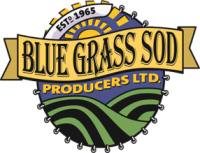Care & Feeding
Be Kind to Your Lawn
Your New Lawn - Maintenance & Fertilizing in Winnipeg
Beautiful, lush lawns don’t just happen—they begin with our carefully selected, certified seed and grass species, chosen for Manitoba’s prairie climate. From there, consistent care, including proper feeding and watering, makes all the difference in keeping your lawn vibrant and healthy.
Maintaining the health of your lawn and preventing problems is the best way to avoid weeds, pests or disease. And it’s easier than most people think.
A few words
Fertilizing Your Lawn
What the letters N-P-K on the fertilizer bag mean:
|
INGREDIENT
|
WHAT IT DOES
|
|---|---|
|
N = Nitrogen
|
Promotes lush green growth.
|
|
P = Phosphorus
|
Encourages strong root growth.
|
|
K = Potassium/Potash
|
Assists in healthy root growth & disease resistance.
|
What the numbers on the Fertilizer bag mean:
The numbers on the fertilizer bag indicate the amount of nitrogen, phosphorus & potassium are contained in the fertilizer. N-P-K
Please feed your lawn. Regular fertilizing will keep your lawn healthy and yields a lawn that is far less susceptible to weeds or disease. Choose a method you are comfortable using and implement regular feeding. The worst thing you can do is expect your lawn to just care for itself.
It’s amazing what a bit of maintenance can do.
Prevention is better than trying to find a cure.
Prevention is better than trying to find a cure.
The Facts
Liquid vs. Granular:
- Liquid fertilizer needs to be applied more often. The major advantage is that results are quick.
- Liquid fertilizer is applied with a hand-held sprayer, usually attached to your garden hose.
- Granular types stay in the soil longer than liquids, so they need to be applied much less frequently.
- All slow-release fertilizers are in granular form.
- Granular fertilizer is applied with a hand held or with a push type spreader easily found at garden supply outlets.
How Much Fertilizer to use:
Fertilizer should be applied based on the square footage of the area & the specific nutrient needs of your lawn.
- Granular: Please follow manufacturer’s instructions on bag or container.
- Liquid: Follow manufacturer’s instructions on container.
NOTES of Caution:
- More is not better. Excessive amounts of fertilizer can result in burnt spots on your lawn.
- Always follow the directions on the package label.
- Use care to avoid spilling fertilizers.
- Never fertilize a wet or dew covered lawn. If a lawn is wet when fertilized, the result is usually burning of the grass due to the granules sticking to the blades and dissolving on them rather than dissolving into the soil.
- To avoid dark streaks, and assure more even distribution, apply half of the needed fertilizer in one direction and the remaining amount in the opposite direction on your lawn.
EXAMPLE: Apply the first half in a north-to-south direction, and then apply the other half in an east-to-west direction.
** Important
- Water your lawn for about an hour, immediately after applying granular fertilizer.
The granules will then dissolve and carry the nutrients to the roots of the grass where it is needed.
If you have any questions just give us a call (204) 269-3052 (Wpg)
